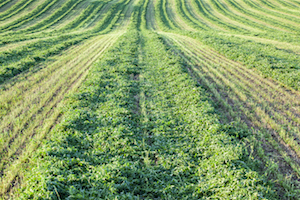Alfalfa weevils can be problematic for producers, particularly in areas such as Kansas and Nebraska. Now, experts from the University of Nebraska-Lincoln Institute of Agriculture and Natural Resources are providing tips for planters who want to wrangle these pests before they wreak havoc on their crops.
The larvae of alfalfa weevils feed on first cutting alfalfa, according to the experts. The adults then thrive on the regrowth after the first cutting, making them an ongoing problem. Experts warn that now up through the next few weeks will be critical in terms of monitoring alfalfa weevils.
Although alfalfa weevil damage has been spotty in much of Nebraska over the past few growing seasons, the experts note that the potential for damage always exists. Those who are growing high-quality alfalfa will want to monitor their fields for weevils over the next couple of weeks for this reason.
Once the alfalfa is high enough to use a sweep net, the experts recommend taking a sample to establish whether weevils are present. If they are, producers should randomly select at least five sampling sites across their entire field. At each site, they can gently pick or cut at least 10 alfalfa stems at ground level, and then shake the larvae off the stems into a bucket. Once they count the number of larvae per stem, they can determine the average and take appropriate action.
Treatment care costs per acre will vary, according to the experts, and the treatment itself will depend on the number of larvae in the area. Insecticides may need to be used if the alfalfa has already reached a mid-vegetative state.
For more information on next steps and other tips from the experts, visit the CropWatch site on the UNL website.
